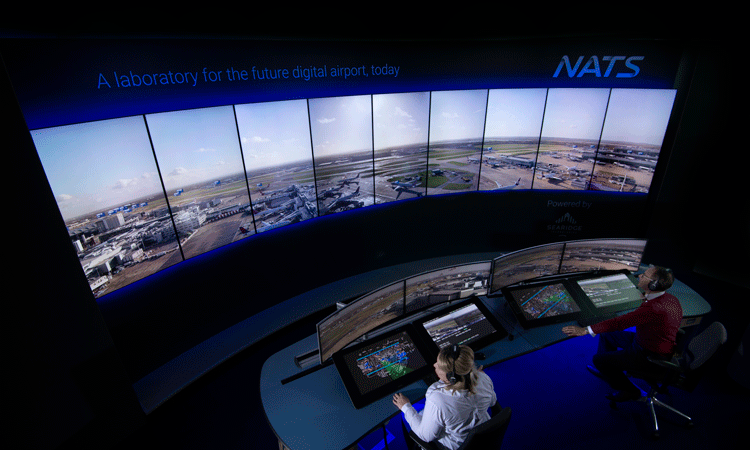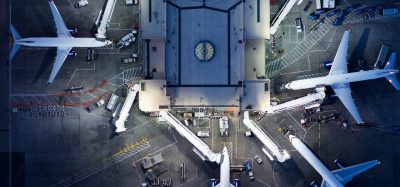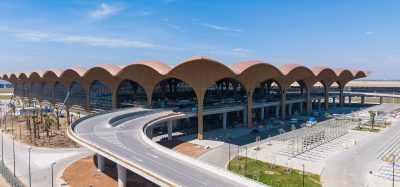Tackling aviation’s big air traffic management challenges
Posted: 26 August 2024 | Martin Rolfe | 1 comment
Martin Rolfe, NATS Chief Executive Officer, gives an overview of the challenges the aviation sector faces in the midst of one of the biggest periods of change in its history.


c: NATS
Aviation has been, and continues to be, an overwhelming source for good in the world, but it also has major challenges it must strive to overcome in the coming years and decades if we are to ensure a ‘better tomorrow’. I’ve focussed on three areas of transformation where the ATM community has a unique role to play in helping the industry continue to be successful, sustainable and secure.
Taking action on the climate crisis
This must be a decade of action on climate change. The industry is quite rightly pushing hard on new technologies, most notably Sustainable Aviation Fuels (SAF), hydrogen/electric aircraft and fleet renewal. Great strides are being made with airlines ordering record volumes of new fleet, but production will only be able to release these into operation at a gradual pace and in terms of SAF, the reality is we are still a long way from scalability.
It is therefore, vital that ATM does all we can to support aviation by using existing techniques, technologies and changes to airspace, to reduce emissions especially in the short-term. Deploying known techniques and technologies that improve operational efficiency – like Intelligent Approach – coupled with the modernisation of airspace designs around the world, could cut aviation’s greenhouse gas emission by 5-6%.
Part of the problem is knowing what and how to measure in terms of airspace and ATM efficiency. That’s why NATS is developing Green Aviation Insights or GAIN. It’s our attempt to build the world’s first truly global index of airspace efficiency. We believe such a tool – underpinned by 3Di, our three-dimensional airspace efficiency algorithm – could help support the adoption of a universally consistent and meaningful set of metrics, calculated daily from operational flight data, airspace configuration and contextual information such as staffing, regulations and weather.
This could help every air navigation service supplier (ANSP) and their stakeholders to better understand the environmental impact and opportunities within their operation, which could be a game-changer for those looking to monitor trends, identify hotspots and track the impact of their environmental initiatives.


c: NATS
The coming of the truly digital airport
When an airport air traffic operation is reliant on visual, ‘analogue’ data, that data cannot be accessed, analysed, shared, augmented or enhanced. In short, it cannot be harnessed to improve the efficiency of the operation. That’s where we’re trying to shift the paradigm with digital towers and the technology that underpins them. Once you digitise those views, you open up a whole new world of possibilities and the advent of the truly digital airport.
Introducing cameras into the airport operation, whether fully digital or hybrid, brings some immediate advantages. Locations on the airfield that could be kilometres aways from the tower cab are now viewable with total clarity. Views that were once obscured are now clear and close, with the option to also overlay important flight information. This enhances a controller’s situational awareness and allows the air traffic service to adapt and grow as the airport itself does. It also removes the need for large airports to have multiple control towers, with all the cost and complexity that adds.
But this is about much more than just giving controllers better views, as important as that is. Once you have digitised those operational views, you can really start to make a difference and not just in the tower, but across the entire airport. That’s exactly what’s happening today at Hong Kong International.
Everything from stand plan optimisation, hold line surveillance, traffic light automation, CDM integration and even a fully digital Airport Performance Operation Cell is now possible on a single, integrated technology platform. This is only possible when you take that visual data from analogue to digital and it is truly transformative when it comes to airport efficiency and performance.
Making space for new users
The third major area of transformation facing our industry is in what we call New Airspace Users. In 2021, NATS set up the BVLOS (beyond visual line of sight) Operations Forum to bring the community together. The Forum published a whitepaper, South of the Clouds, setting out the regulatory developments needed to take the industry to the next level.
While BVLOS flights currently operate in segregated airspace to keep them safely separate from crewed aircraft, this isn’t sustainable or scalable for a fast-growing industry and the industry must find a way of freely accommodating BVLOS and other new operators. That means new regulations, new technologies and new ways of working.


Digital tower lab.
c: NATS
NATS’ New Airspace Users roadmap aims to provide some of the answers, and is built around tenets of safety, equitability, innovation and the integration of all airspace users. While part of our vision is focussed on infrastructure and data sharing, we are also considering the procedures needed to ensure safe integration of crewed and uncrewed flights. Our focus is on providing the infrastructure and services to help new airspace users to get flying.
Last year marked a significant moment in that journey. Firstly, we shared a vision for the delivery of aeronautical and data-sharing services. NATS OpenAir would provide the fundamental building blocks on which to develop the services that new airspace users will need to safely integrate with other aircraft – knowledge of where other traffic is flying and flight plan deconfliction, for example. It would not, in the main, provide services directly to operators, but would provide air navigation service providers with a central source of truth that they can use to deliver safe and assured onward services to their users. Given the importance of these services to new users, it’s vital we get them right, which is why we’re spending much of this year consulting with industry partners, end users and the wider aviation community before submitting a formal proposal to the Civil Aviation Authority (CAA) next year.
In the meantime, we also witnessed real breakthroughs in two projects as part of the UK Future Flight Challenge.
In October 2023, Project Caelus delivered a BVLOS drone flight out of Glasgow Airport as a demonstration that BVLOS operations are possible within controlled airspace at a busy international airport. Our teams were working to ensure the procedures were in place for the flight to happen safely, while our analytics and R&D teams have been developing the technology and simulation models needed to evidence how this one flight could be scaled. For regional airports especially, this presents a huge opportunity to diversify their operations and to one day become drone logistics hubs.
Looking at advanced air mobility (AAM), in December we ran the first large-scale simulations of electric vertical take-off and landing (eVTOL) flights within UK controlled airspace. This was the major milestone in proving the viability of AAM in the UK. We simulated a number of eVTOL flights from Bristol Airport through the airspace around Farnborough, and then onto London City Airport. But what made these ground-breaking was the combination of new prototype technology and the creation of a new ‘Airspace Manager’ function. As part of the simulations, the eVTOL operator filed their flight plans via an app which could then be approved or amended within minutes, with each flight deconflicted from other aircraft before even taking off. The ‘Airspace Manager’ then monitored the airspace from a digital ‘master control room’.
While not the finished article, our aim is to achieve the best balance between safety and airspace access for AAM without adding to the workload of Controllers or Pilots. It also opens the door to airports to become ‘vertiports,’ with eVTOLs operating seamlessly alongside existing traffic.
Transformation is perhaps an overused word, but aviation is truly in the midst of one of the biggest periods of change in its history. From tackling the climate crisis and embracing digitisation to welcoming new users to our skies, air traffic management has an historic opportunity to play a leading role in shaping and securing the future.


An engineer by training, Martin holds a master’s degree in Aerospace Systems Engineering from the University of Southampton. He has 30 years of experience in the defence and aerospace industry.
Stay Connected with International Airport Review — Subscribe for Free!
Get exclusive access to the latest airport and aviation industry insights from International Airport Review — tailored to your interests.
✅ Expert-Led Webinars – Gain insights from global aviation leaders
✅ Weekly News & Reports – Airport innovation, thought leadership, and industry trends
✅ Exclusive Industry Insights – Discover cutting-edge technologies shaping the future of air travel
✅ International Airport Summit – Join our flagship event to network with industry leaders and explore the latest advancements
Choose the updates that matter most to you.
Sign up now to stay informed, inspired, and connected — all for free!
Thank you for being part of our aviation community. Let’s keep shaping the future of airports together!
Related topics
Air traffic control/management (ATC/ATM), Digital transformation, Emissions, Operational efficiency, Sustainability, Sustainable Aviation Fuel (SAF)
Related airports
Bristol Airport (BRS), Glasgow Airport (GLA), London Heathrow Airport (LHR)



















It is a shame that communities do not come before this industry when it comes to operating air traffic control to benefit those on the ground rather than the sector it serves. SAF has been proven to be as polluting as fossil fuel so not the answer as such we should reduce the number of flights not increase as any saving in routing is lost due to additional flights.